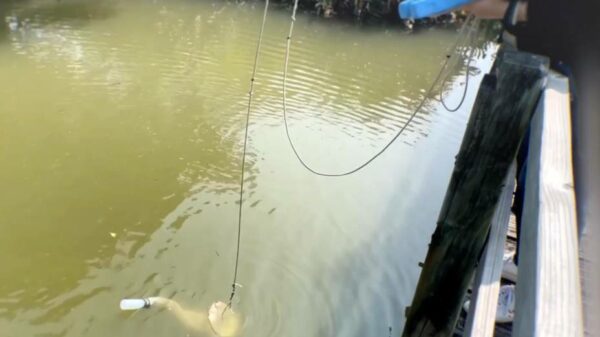While exploring the brackish water of shrimp ponds at Mai Po Nature Reserve in Hong Kong, scientists made a shocking discovery – a brand new species of box jellyfish named Tripedalia maipoensis, according to the Miami Herald.
While the name is certainly eye catching that is not what was the most noteworthy part of the discovery. The new species is a creature with a cube-shaped body and 24 eyes that are arranged in sets of 6 making it genetically and physically distinct from other box jellyfish.
The new creature, which measures less than inch long, has a see-through body with a slight whitish tinge, and comes equipped with three tentacles that extend from each corner of it’s body, according to researchers.
The Tripedalia maipoensis jellyfish has “pedal-shaped structures” at the base of its tentacles that act like “boat paddles” according to an official release. These “paddles” allow box jellyfish to swim faster than other types of jellyfish.
Qiu Jianwen, the research team leader, described the Mai Po area as “relatively well-studied” and noted this discovery “highlights the rich diversity of marine life in Hong Kong and even the whole of China”.
“Named for its cube-shaped body, the box jellyfish, (or scientifically known as class Cubozoa) belong to the phylum Cnidaria. Even though the class Cubozoa is one of the smaller groups among the cnidarians, it includes some of the highly venomous marine animals that are widely known in the tropical waters.
The newly discovered Tripedalia maipoensis belongs to the family Tripedaliidae. It is the fourth described species of Tripedaliidae, and the third described species of the genus Tripedalia around the world. It has a transparent and colourless body with an average length of 1.5 cm. There are three tentacles that are up to 10 cm long at each of its four corners. Pedalia, a flat pedal-shaped structure at the base of each tentacle that looks like a boat paddle, allows box jellyfish to produce strong thrusts when they contract their bodies. They can thus swim faster than other kinds of jellyfish.”























